Pigmenten
Pigmenten in de praktijk
Pastels, everyone knows them, most of them. Use However, there are many who have problems to use them correctly.
the theory
Pigment is nothing more than powder. This powder is the same as the powder that is used all over the world to make. Colors We can say pigments are a basic material such as rubber, petroleum or coal.
With this powder industry produces all kinds of paints such as enamels, acrylics, pastels, colored pencils, etc. All one needs to make a certain type of paint is an agglutinant. Oil is the agglutinant of oil, Arabic rubber for pastels ... but the pigment is always the same.
Pigment comes from various minerals such as magnesium, titanium and zinc. (See photo)
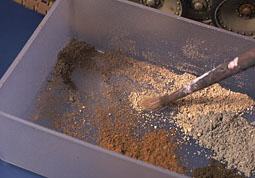
The quality of the pigment is determined by two factors :
1. the purity of the pigment which is determined by the mineral origin
2. the degree of fineness of the powder , and the powder is thick , you have a poor quality of the pigment .
This means that when we make powdered pastel chalks using sandpaper , we have a poor quality of pigment, because it is the agglutinant . This is the main difference between the pigment of MIG and pastels.
The technique and the use of powders in an artistic way in the modeling world is very old . Even Verlinden used in a rudimentary way pastel powder on his models. This technique is not new and is usually used to simulate dust effects. At present pigments are considered in the modeling world . As a new ' tool' . Many builders use it already and some swear by it .
What is the secret of pigment ? You can go to the specialist trade , and buy a kilo of Magenta color for 12 or 16 euros , but in most cases they only sell the basic colors . The modeler needs to be model specific colors. We can not just use blue or yellow to simulate dust or mud. This means that the secret of the pigments is not in the pigment itself , but the combination of pigments that are used to create the desired effects. That is precisely the difficulty . If the combination of pigments is not quite right , the result of the model can be catastrophic.
Remember that the most important of the color pigments . And of course, the pigment is very fine. The effects that can be achieved are dust, mud , fresh mud , rust , ashes , dirt, rain, stripes and whatever you can think of. ( see photo )
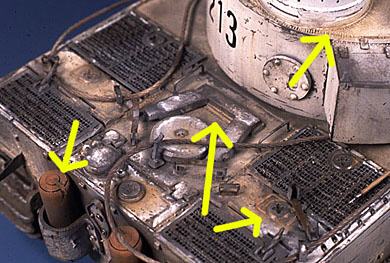
There are many different techniques using pigments. Some are very easy, others very complex. In general, the average user can obtain very good results quickly. In fact, the pigments can replace the old techniques for dust and mud. One obtains the same result in much less time. The modeller who wants to work quickly, or who still want to produce good results with little experience opt for pigments. But the experienced builder can combine into his or her techniques.
The basic techniques are:
1. direct use
2. combined use
The following effects can be achieved by using the paint brush with directly;
- DESERT DUST;
The pigment is applied directly to a matt surface.
If the surface is glossy powder will disappear with time.
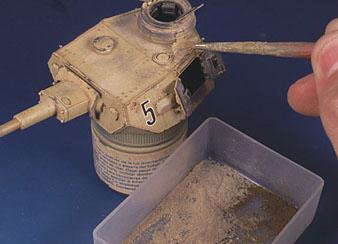
- SMOKE;
Using black color
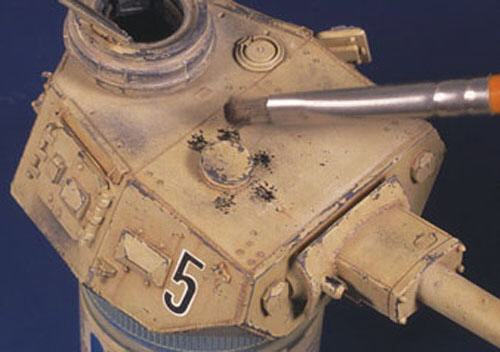
- RUSTY SURFACES;
such as the exhaust pipes or rusted vehicle
- RUSTED TRACKS;
use rust colors
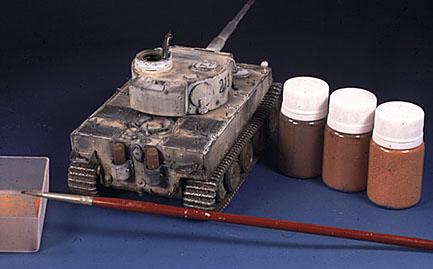
- COPPER DUST;
copper produces a fine greenish oxide that can be achieved with pigments
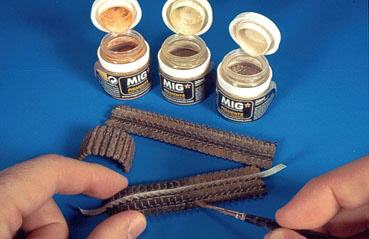
- DIRT EFFECTS ON AIRCRAFTS;
use different mixes of gray and brown
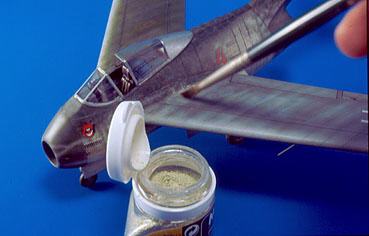
- CITY DUST;
The best way to get into a devastated city powdery effect is to use pigments directly
The following effects can be achieved through the combined use of pigment with other products;
- EUROPEAN DRY EARTH;
when the earth is dried on a vehicle, the other effect than that of the desert. We need to use a dark brown pigment. It is applied with a brush mixed with a few drops of turpentine.
The turpentine helps the powder on the surface
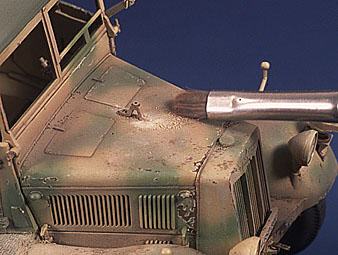
- ASH, mixing black and white in order to make under the wheels or tracks small heaps of powder.
Then we add a few drops of Turpentine
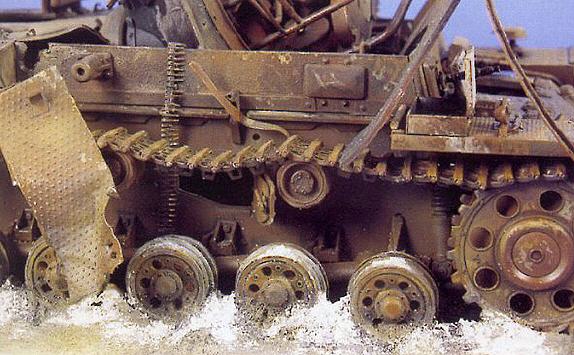
- DRY MUD;
to achieve this effect, mix plaster, brown pigment and acrylic resin. The mixture is applied with a brush old. Carefully monitor the drying process to prevent undesired effects. Once dry, it is impossible to remove the mud.
- FRESH MUD;
mixing a large amount of dark pigment with black varnish and plaster. There may also be true earth, sand or small stones are added.
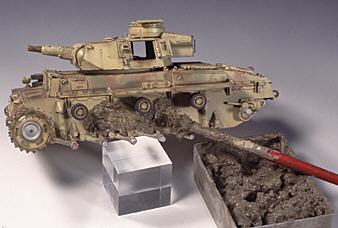
- LARGE RUSTY SURFACES;
For large areas, the oxide mat should be, but it must also remain on the surface. Use alcohol i.p.v. turpentine.
- RAIN TAGS;
an easy way to obtain this effect is to mix it with water. pigments This is easier to control than with Tamiya Buff.
- COLOURED PUTTY;
it may sometimes be interesting to use. colored putty We can immediately add the pigment.
- COLOURED PLASTER;
We can make stone buildings in the characteristic red color. The pigment does not change the characteristics of the gypsum.
- FIGURE EFFECTS;
the easiest way to bring on the uniforms of soldiers and crews sense the pigments dry mud and dirt mixed with turpentine. We can also make countless effects on wheels, barrels, chairs, floors etc.
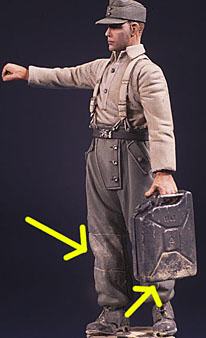
The pigments are powders and have never really stuck to any surface except when you mix them with any other product . There are of course a few tricks to solve this. There are two types of surfaces and textures, matte or glossy.
If the texture mat , then it could be compared to that of very finely schuurpapier.Is the shiny surface it is similar to glass or a mirror . Now bring your powder into a matte surface it will attach itself , even if you pick them up . On a smooth surface , the powder can all just go away by air . Therefore, you should always make the pigments on a matte surface .
MIG models are usually shiny, like in real life . But to using pigments , he always brings advance a layer of matte varnish or Tamiya Buff , but only in the areas where the pigments are applied . For the remaining areas of the surface gloss or satin .
source:
Professional Pigment Colors
by: Mig Jimenez




